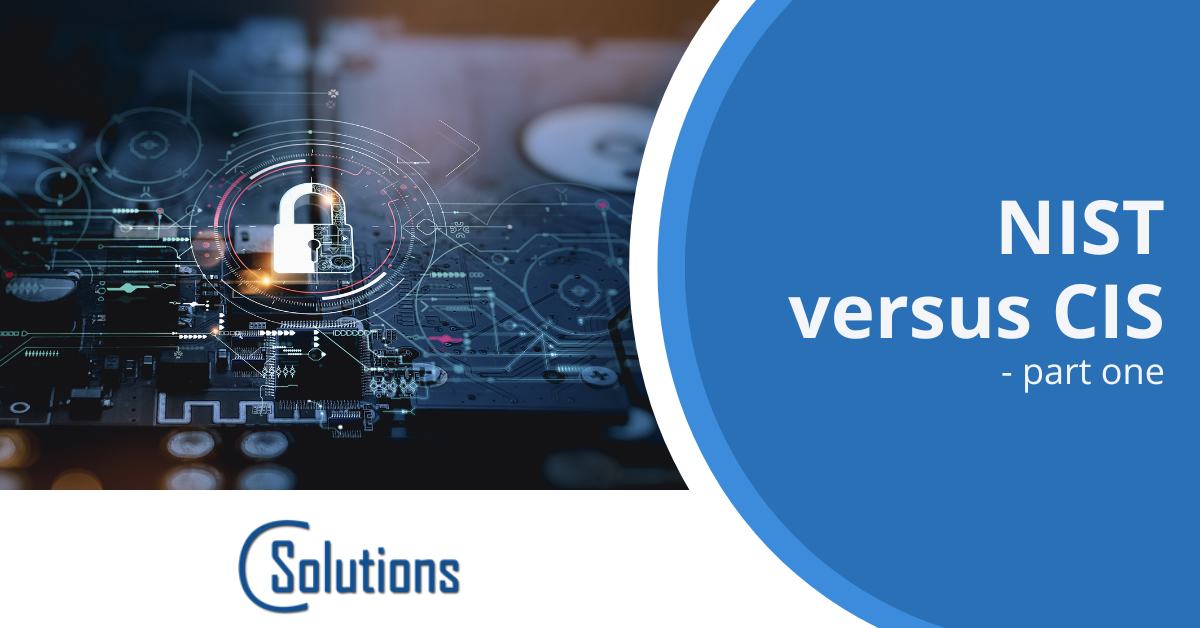NIST versus CIS – part one

It would be difficult to discuss cyber security without mentioning either the National Institute of Standards and Technology (NIST) or the Center for Internet Security (CIS). Both of these organizations play a major role in setting cybersecurity standards, but there are some key differences between the two that IT professionals should keep in mind.
They are both very well-regarded organizations and serve important roles in the cybersecurity community. Without them, the security of many systems would be at serious risk. But they each bring unique approaches, resources, and mandates to address the myriad of attack vectors and vulnerabilities that exist in today’s connected world.
Let’s take a closer look at the differences between NIST and CIS:
National Institute of Standards and Technology (NIST)
The NIST is a government agency within the Department of Commerce responsible for developing standards and guidelines for federal agencies to use. NIST focuses heavily on research related to cybersecurity and has published numerous cybersecurity-related guidelines, including the Cybersecurity Framework and the 800-Series Special Publications.
NIST also provides resources to federal agencies to assist with implementing their guidelines. It’s always best to consult the NIST website for the most up-to-date information and guidelines. Additionally, NIST has an active social media presence and an online blog.
NIST provides standards and guidelines for federal agencies and works to improve their security postures.
Pros:
- NIST’s standards carry legal weight, making them easier to implement.
- Access to a range of helpful best practice documents and resources.
- NIST works closely with government agencies to ensure their cybersecurity policies are up-to-date.
Cons:
- NIST’s standards don’t always apply to private sector organizations.
- Can be difficult or time-consuming to access resources and reviews can take a long time.
- NIST’s standards may not address all security risks adequately.
Center for Internet Security (CIS)
The Center for Internet Security is a non-profit organization that focuses on developing and providing resources to help organizations reduce their risk of cyberattacks. The CIS offers numerous hardening guides and benchmarks that IT professionals can use to implement best security practices. It also offers cybersecurity certifications and cyber range training to further educate individuals on the importance of cyber security.
CIS provides resources and training to help organizations improve their security posture.
Pros:
- Access to a large library of resources and training tools.
- Services are open to public and private sector organizations alike.
- Certification programs are available for cybersecurity professionals.
Cons:
- CIS standards aren’t binding, so organizations must rely on self-enforcement.
- Services are not free, so organizations must factor in the cost of implementing them.
- Some of the resources may be more difficult to implement for those without adequate cybersecurity knowledge.
Similarities
Both the NIST and CIS offer a variety of resources to help organizations improve their security postures. Both organizations are respected in the cybersecurity community for their contributions to the field of cybersecurity. Additionally, both organizations provide education and guidance to help individuals understand and protect against cyber threats.
When it comes to cybersecurity standards, NIST’s standards are more binding than those of CIS, but both are invaluable resources to organizations looking to stay secure. It’s important to note that no single standard is enough to make an organization secure, and using a combination of standards from both organizations is recommended.
While each organization has its pros and cons, it’s clear that both NIST and CIS have important roles to play in ensuring the security of the world’s digital infrastructure.
Both Are Critical To Cybersecurity
It is not accurate to say that one is better than the other, as NIST and CIS serve different purposes and offer different resources. Both NIST and CIS provide valuable guidance and best practices for organizations to follow to improve their cybersecurity posture.
NIST and CIS are two critical organizations that are helping to shape the future of the industry. We need both organizations to work together to ensure our digital infrastructure is as secure as possible.
As our lives become more intertwined with technology every day, having both NIST and CIS fighting on the front lines is an important part of staying safe. IT professionals should take note of the differences between the two organizations, as well as how they’re alike while making use of the resources they both provide.
Want To Learn More About The NIST and CIS Standards?
If you’re interested in learning more about the NIST and CIS as well as how you can use them to protect your business against cyber-attacks, contact our experienced IT professionals at C Solutions!
Contact us online or by phone at 407-536-8381 for more information on keeping up with an ever-changing digital landscape.
